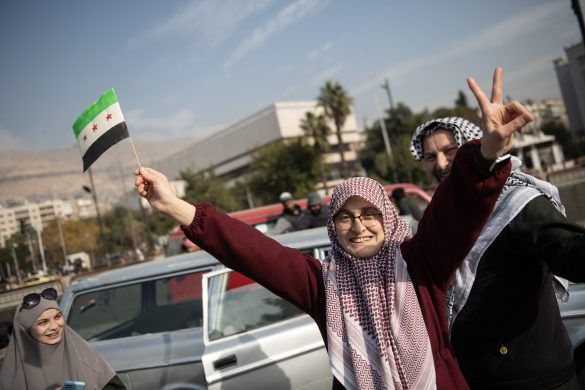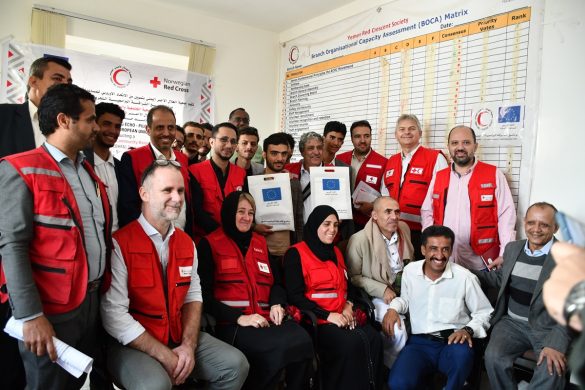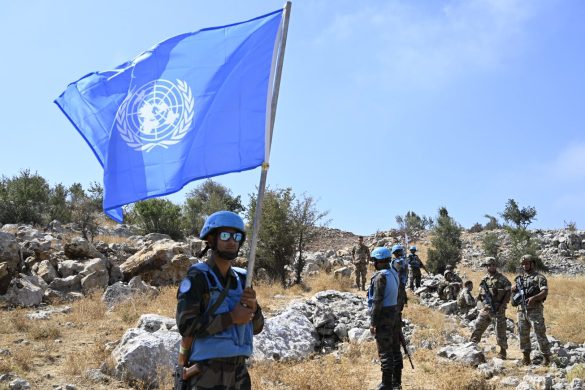Dagliglivet i Gaza-striben er en linedans melem helt nødvendige hverdagsaktiviteter og nye ødelæggelser fra luften – FN-nyhedsbureauet IRIN har taget en tur rundt i det martrede område, hvor den seneste konflikt har kostet over 500 palæstinensere livet, flere end 3.000 kvæstede og nye ødelagte huse.
GAZA CITY, 17 July 2014 (IRIN): Mazen, desperate, worked his way to the top of the line. “Excuse me, can I go in front? Its an emergency,” he pleaded. After squeezing his way through the crowd, he implored the bank teller to give him his month’s wages.
While all those in Gaza could claim their situation is critical, Mazen’s is worse than most. The 50-year-old father of six told IRIN that an Israeli bomb targeting his neighbor’s house the day before had all but destroyed his own.
“All my savings are gone; my house is gone; my family is displaced. Thank God none of them were injured. We start all over again, but we will not give up”, he said.
Mazen’s haste was not merely due to his lost home; he also knew he was on a deadline.
He needed to get money out, buy key things and find a safe place for his family during a brief, five-hour ceasefire, after which he feared the Israeli strikes – which Israel says have been aimed at militants firing rockets from Gaza – would resume.
Killing of four children playing on a beach
The temporary reprieve from the bombardment – negotiated by the UN and backed by both the Israeli army and the key Palestinian militant groups Hamas and Islamic Jihad – was the first break in violence since the escalation began on 8 July.
The attacks were sparked by the killings of three Israeli teens in the West Bank, which Israel blamed on Hamas, and the murder of 16-year-old Palestinian Mohammed Abu Khdeir.
The ceasefire came only a day after the killing of four children on a Gaza beach by an Israeli attack.
While there were a few rockets fired by militants, with both sides accusing the other of breaking the ceasefire, Gaza was quieter than it had seen since the beginning of the latest round of hostilities.
The calm brought with it scenes of desperation. Even before the ceasefire came into effect at 10am, thousands of Palestinians had flocked into the streets.
Queues at ATM machines stretched back for blocks, with those waiting telling IRIN they had been in line for up to three hours.
What can people do in five hours?
In Gaza City, the traffic was at a standstill, while in local shops and markets the atmosphere bordered on frantic. In a nearby hypermarket, Abdullah, 37, was shopping with his family of four for groceries for the coming days.
“It is the first time we have been outside in six days,” he said, adding that they had been running low on some supplies.
“What can people do in five hours?” he lamented. “We started at the bank, waited for two hours, and then came here to buy stuff … as you see everybody is in a hurry. This is miserable and it must end.”
Elsewhere, other families who were among the 22,000 sleeping in UN shelters, braved the streets to check on their homes and neighbourhoods.
IRIN saw one family picking through the rubble of what had been their house – searching for of a remainders of lives lost. At al-Shifa Hospital, families jostled to visit their relatives who had been injured.
In total, Gaza’s Ministry of Health estimates that at least 237 Palestinians have been killed in the recent attacks, the vast majority civilians (tirsdag var tallet over 500, red.).
One Israeli civilian has been killed by mortar fire close to the Gaza border.
For those that remain in Gaza, the situation is becoming more critical by the day with supplies of medicine and food running low.
Humanitarian window
Læs videre på
http://www.irinnews.org/report/100362/gaza-breathes-briefly-then-holds-its-breath
Se også telegrammet http://www.u-landsnyt.dk/nyhed/19-07-14/lidt-om-omstridte-gaza














